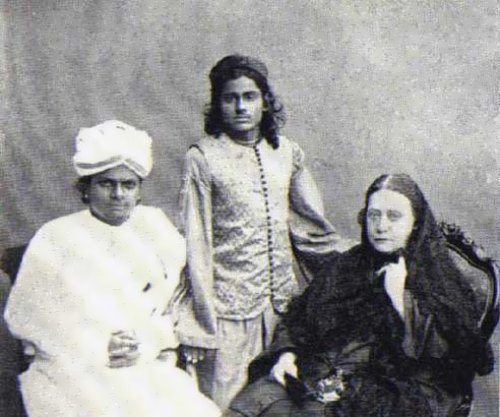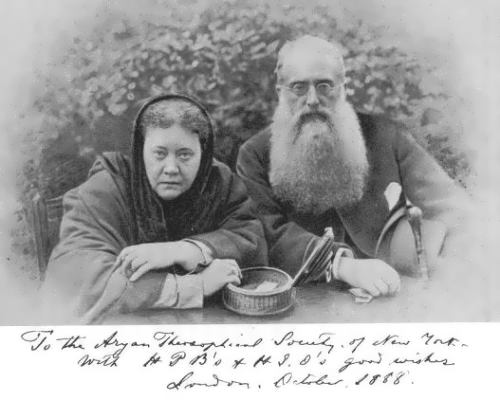Elena Blavatskaya – founder of the Theosophical Society
Elena Blavatskaya was a Russian noblewoman, religious philosopher, writer, occultist and spiritualist, traveler. You know, she was a founder of the Theosophical Society and the World Brotherhood. Elena’s main works were written in English. Some authors suggested that she had the ability to clairvoyance. Actually, she can be called one of the most influential women in world history. Elena was called the Russian Sphynx; she opened Tibet to the world and showed the Western intelligentsia occult sciences and Eastern philosophy.
Elena was born on July 31, 1831 in Yekaterinoslav into a family of famous writer-novelist Elena Hahn (people called her Russian George Sand) and Colonel Peter Hahn. Blavatskaya’s great-grandfather, Prince Pavel Dolgorukov (1755-1837) was awarded the highest military award – the Order of St. George, and he was Kutuzov’s friend and colleague. Sergei Witte, highly influential policy-maker, was Elena’s cousin. Her sister Vera, the future writer Jelihovskaya, was born in 1835 in Odessa.
In 1838, mother and little girls went to Poltava, where Elena was engaged in dancing and her mother taught her to play the piano.

Vera, Charles Johnston and Henry Olcott standing behind Madame Blavatskaya and her sister, Vera Jelihovskaya. London 1888
Even in her childhood Elena was different from her peers. She often told that she saw different strange creatures, heard the sounds of mysterious bells. Also she said that a majestic Hindu appeared in her dreams. The girl called him the Guardian and said that he was saving her from all troubles. As later Elena Petrovna wrote, it was Mahatma Moriah, one of her spiritual teachers. She met him in 1852 in London’s Hyde Park.
Besides, in 1844, Blavatskaya traveled to London and Paris to study music.
On July 7, 1849 Elena Petrovna married vice-governor of Erivan Province Nikifor Blavatsky, who was much older than her. But 3 months after the wedding she escaped from her husband.
Blavatskaya told that she worked as a circus rider in Constantinople and moved to London after a hand injury. In Britain, she allegedly acted in drama theater, and still had time to go to Egypt and to join the ancient pagan cults.
She went on a trip to Europe and gave piano concerts in several countries. Biographers say that she also had time to travel to Greece and Asia Minor, in 1851 she was in India.
The woman returned to Russia in 1858 and arranged spiritual séances.
Later, in 1860, Blavatskaya went on a trip to the Caucasus and then she went to India and Tibet.
Together with Colonel Henry Steel Olcott and lawyer William Quan Judge Elena founded the Theosophical Society in New York in 1875. The tasks were stated as follows: 1. Creation of the nucleus of the Ecumenical Brotherhood of Humanity without distinction of race, creed, sex, caste or skin color. 2. Promoting the study of comparative religion, philosophy and science. 3. Investigation of unexplained laws of Nature and forces hidden in man.
The Theosophical Society built several Buddhist schools in Ceylon, most notably Ananda College in Colombo, Mahinda College in Galle, Dharmaraja College in Kandy and Maliyadeva College in Kurunegala.
At the time of Blavatskaya’s death there were more than 60,000 members in the Theosophical Society. This organization had a great influence on public thought, it consisted of outstanding people of the time, from inventor Thomas Edison to poet William Yeats.
By the way, Blavatskaya stayed in Tibet for seven years and studied occultism.
During her lifetime, Blavatskaya made a round-the-world trip twice, was in Egypt and Europe, in Tibet and India, and in South America. What is more, in 1873, she became the first Russian women to receive American citizenship.
Blavatskaya died on April 26 (8 May), 1891 in London, England. After her death she was burned, and the ash was divided into three parts: one part remained in London, another in New York, and the third in Adyar. The day of remembrance of Blavatskaya is called the Day of the White Lotus.
There were nine Russian theosophical clubs in 1908 – four in St. Petersburg, two – in Warsaw, one – in Smolensk, Kaluga and Kiev. On September 20, 1908, these clubs were united into the Russian Theosophical Society.
In 1924, the famous painter, traveler and public figure Nicholas Roerich created the painting The Herald, which was devoted to Blavatskaya.
The movie “Who are you, Madame Blavatsky?” was filmed in 1991. People’s Artist of the Russian Federation Irina Muravieva played the main role.
In 1975, the Government of India has issued a commemorative stamp dedicated to the 100th anniversary of the founding of the Theosophical Society. The stamp shows a seal of the Company and its motto: “There is no religion higher than truth.”
Source: www.spb.aif.ru
Elena Blavatskaya – founder of the Theosophical Society

Blavatskaya in her chair beside the publisher James Pryce and his secretary George Robert Stowe Mead






